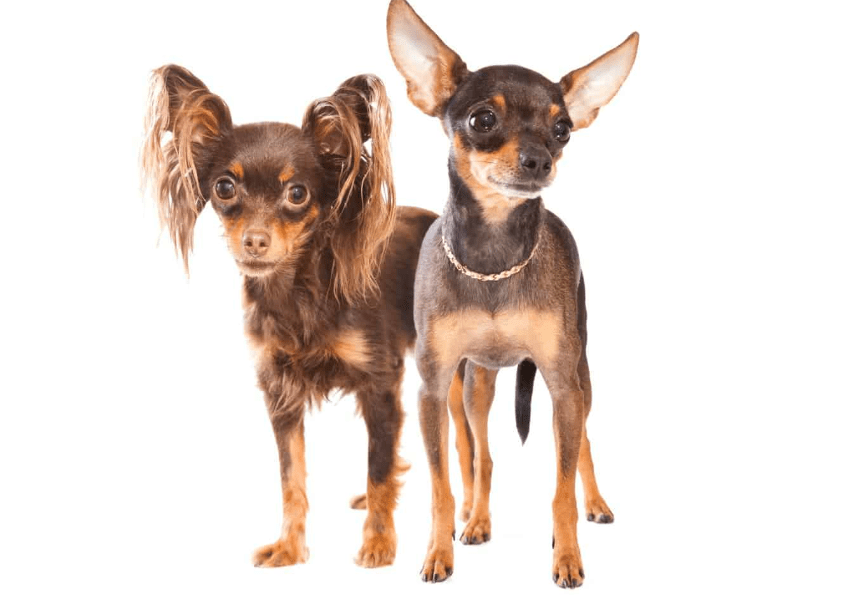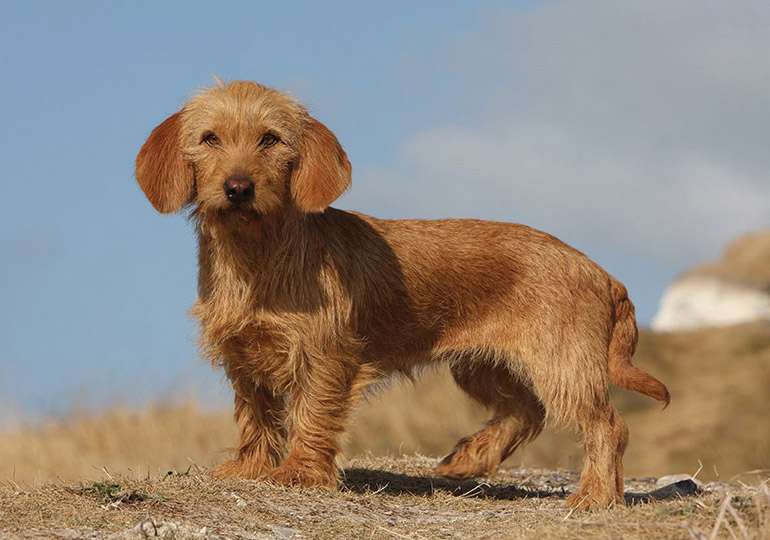
Description
The small Russian Toy has a beautiful appearance that is complemented by long legs and a slim, muscular frame. The coat of the Russian Toy can be either short (smooth, close-lying, and lustrous) or long (soft, wavy to curly). It could be red, red sable, black and tan, chocolate and tan, blue and tan, or red-brown. Additionally possible are little white markings and brindle, however the latter is forbidden by breed standards. One of the tiniest breeds in the world, the Russian Toy has a small skull, huge eyes, and triangular ears.
Origin/History
English toy terriers, a miniature dog breed that Russian nobility maintained as pets, are the ancestors of Russian toy dogs. The breed underwent changes during the Russian revolution and was almost completely wiped out. The resulting canines were nicknamed Russian toys because they were so dissimilar from their English toy terrier forebears.
Originally, all Russian Toy dogs had short hair, but in the middle of the 20th century, a long-haired dog was also produced. This unique breed sports fringe on its ears, tail, and the backs of its legs in addition to having a longer coat.
Before the 1990s, when it began to spread outside of Russia, including the United States, this breed wasn’t well known outside of that country. Due to their striking resemblance to Chihuahuas and their humorous personalities, Russian toys have now gained popularity in the United States. In 2008, both the American Kennel Club and the United Kennel Club recognized this breed formally.
Temperament
The Russian Toy is a people-oriented breed that creates tight familial bonds. It is intelligent, affectionate, and gregarious. These laid-back dogs get along well with both young children and senior citizens.

Care
Due in part to their small stature, Russian toys are a breed that requires little maintenance. But in order for them to enjoy a long and happy life, it is crucial to give them the necessary care, which includes diet and exercise.
Exercise
Due to their high level of energy, Russian toy dogs require a lot of exercise and entertainment. Since these puppies are so small, it won’t take you very far to wear them out, making it easier to meet their exercise and mental stimulation demands. You can even play fetch with them inside. Although it is enticing to believe that a Russian toy would make a nice “purse dog,” these canines are active and curious. They would much rather accompany you on foot than go in a purse.
Grooming
Both the smooth-haired and long-haired varieties of this breed are simple to care, though a long-haired dog will need to be groomed more frequently. For a long-haired dog’s coat to stay healthy, brush it out every day with a soft brush. A short-haired dog may benefit from a rubdown with a soft cloth to remove dirt and debris and can thrive with less frequent brushing. In particular for dogs with long hair, regular grooming is essential to preventing mats.
Regular dog baths are also necessary. A monthly (or more often) bath using an excellent dog shampoo and coat conditioner can assist to maintain the condition of their coat. A Russian Toy’s health also depends on regular dental cleanings and nail trimmings. Once a week, you should gently clean their ears. Pay attention to if their ears are red, odorous, or oozing in any manner, as these could all be indicators of a serious infection.
Training
Due to their intelligence, these dogs are quite simple to train. Given that this breed has a tendency to be rather headstrong and stubborn, it is advisable to begin teaching them while they are young. They learn quickly when given plenty of goodies and constructive criticism.
Nutrition and Diet
A Russian toy must consume premium dog food. These tiny dogs can easily become obese, especially if they are given a lot of goodies, so it’s crucial to select a meal and portion size that is right for your particular dog. Small, low-calorie treats can be given to Russian toys to help them manage their weight, but frequent exercise is also crucial.
Table





